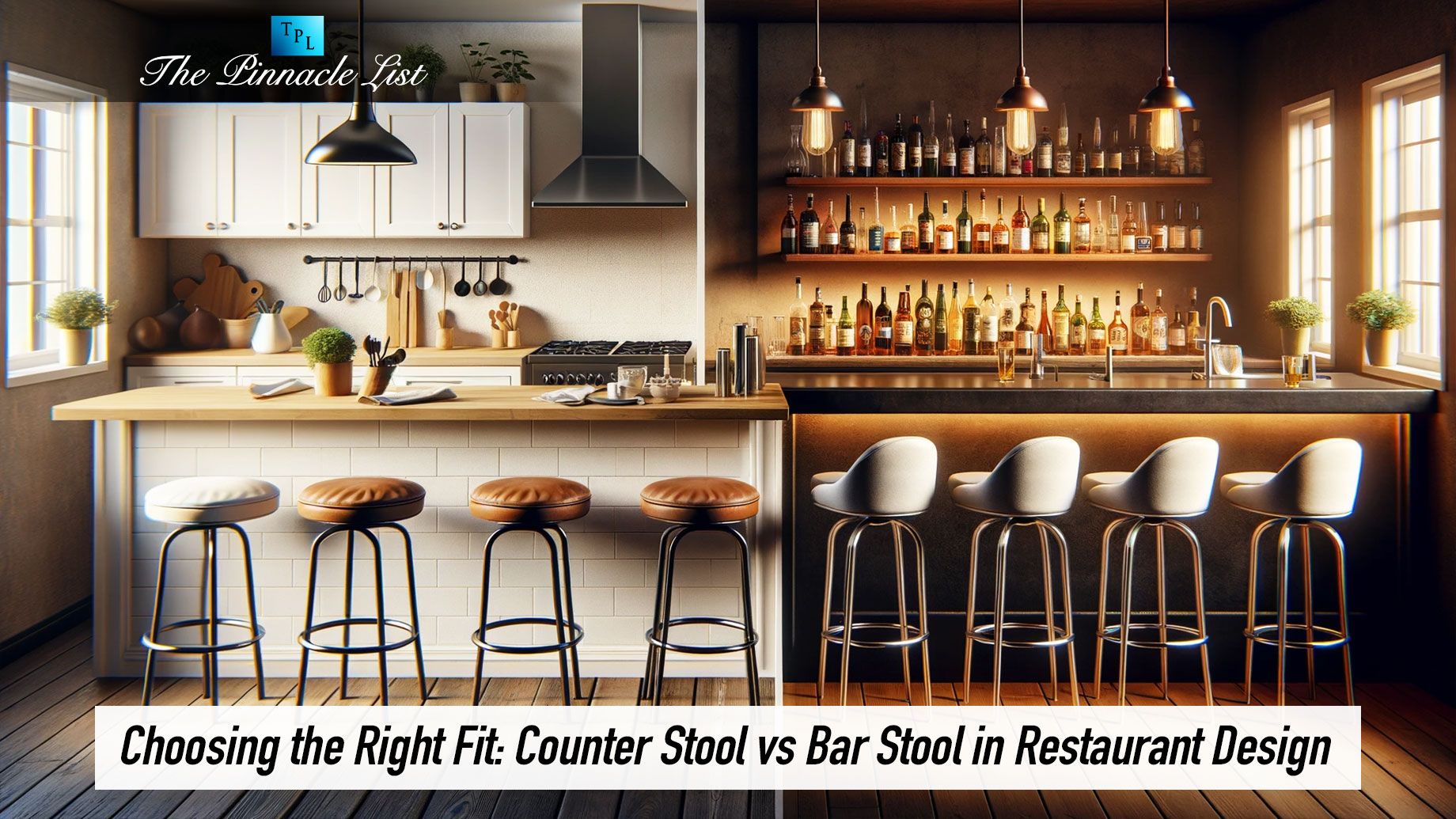
Choosing the right seating in a restaurant is a vital decision that impacts customer comfort and overall ambiance. The choice between counter stools and bar stools can make a significant difference in how guests interact with the space. Understanding the nuances of each type of restaurant stool is essential for creating an inviting and functional environment.
This post will shed light on the topic of counter stool vs bar stool. Read thoroughly to have a clear understanding of restaurant barstools and counter stools. This will help you make an informed decision in choosing the apt stool for your restaurant.
What is a Bar Stool?
Bar stools are a popular seating option in many restaurants and bars. They typically stand about 28-30 inches tall, designed to align with standard bar heights. These stools provide a casual seating option, perfect for socializing and enjoying drinks. The elevated height of bar stools encourages a more laid-back, communal atmosphere, making them a staple in bar areas.
What is a Counter Stool?
Counter stools, slightly shorter than bar stools, usually measure around 24-26 inches in height. They are perfect for counter-height tables, which are about 36 inches high. These stools offer a comfortable seating option for dining and casual meals. Their size makes them versatile, fitting well in smaller spaces like kitchen counters or café settings.
Counter vs Bar Stool: Key Differences
Let’s first start with bar stool vs counter stool height. Bar stools are taller and suited for bar-height surfaces around 40-42 inches. On the other hand, counter stools match well with counter-height surfaces of about 36 inches. This height difference affects the stool’s usability, comfort, and placement within the restaurant layout.
Factors to Consider When Choosing the Right Stool
1. Restaurant Bar Height vs Counter Height:
When deciding between bar height and counter height stools, consider the restaurant’s layout and the purpose of each area. Bar height stools, typically 28-30 inches high, are
perfect for lounge areas. These are also appropriate for traditional bar settings where patrons might stand or sit while socializing. Counter height stools, about 24-26 inches tall, are better suited for dining areas or café-style seating. The height impacts customer comfort and the overall flow of the space. Matching the stool height to the corresponding counter or bar height ensures a comfortable and practical seating arrangement.
2. Design and Style of the Stool:
The style and design of the stool are critical in setting the tone of your restaurant. Sleek, minimalist stools might suit a modern, upscale eatery, while cozy, upholstered stools could be ideal for a casual cafe. Consider the overall theme and atmosphere of your restaurant when selecting stools. The design should complement the interior decor and contribute to the ambiance you want to create. Functionality is also key; for instance, stools with backrests offer more support and comfort, whereas backless stools are more space-efficient.
3. Materials Used for Making the Stool:
The material of the stool impacts both its appearance and durability. Common materials include wood, metal, plastic, and upholstered fabrics. Wood stools offer a classic, warm look but might require more maintenance. Metal stools are durable and can fit a variety of décor styles, from industrial to contemporary. Upholstered stools provide comfort and can add a splash of color, but they require more cleaning, especially in high-traffic areas. Consider the daily usage and the environment of your restaurant to choose a material that balances aesthetics with practicality.
4. Maintenance and Care:
Maintenance is a vital consideration, especially in a busy restaurant setting. Choose stools that are easy to clean and maintain. Materials like metal or plastic can be more durable and easier to clean compared to fabric upholstery, which may stain easily. Additionally, consider the stool’s construction; stools with fewer crevices and simple designs are generally easier to keep clean. Regular maintenance not only keeps the stools looking good but also extends their lifespan, making it a cost-effective choice in the long run.
5. Pricing:
Pricing can vary significantly based on the stool’s design, material, and brand. While it might be tempting to choose less expensive options, consider the long-term value. Investing in high-quality stools can be more cost-effective over time, as they tend to last
longer and require less maintenance. However, it’s important to balance quality with your budget constraints. Sometimes, mid-range options offer a good blend of quality and affordability. Keep in mind that the stools are an investment in your restaurant’s atmosphere and customer experience.
Final thoughts
The choice between counter stools and bar stools significantly influences a restaurant’s functionality and style. Understand the differences in height, style, material, and maintenance requirements. This will help in selecting the right stools that meet both aesthetic preferences and practical needs. The right choice enhances the dining experience, making it comfortable and enjoyable for customers.